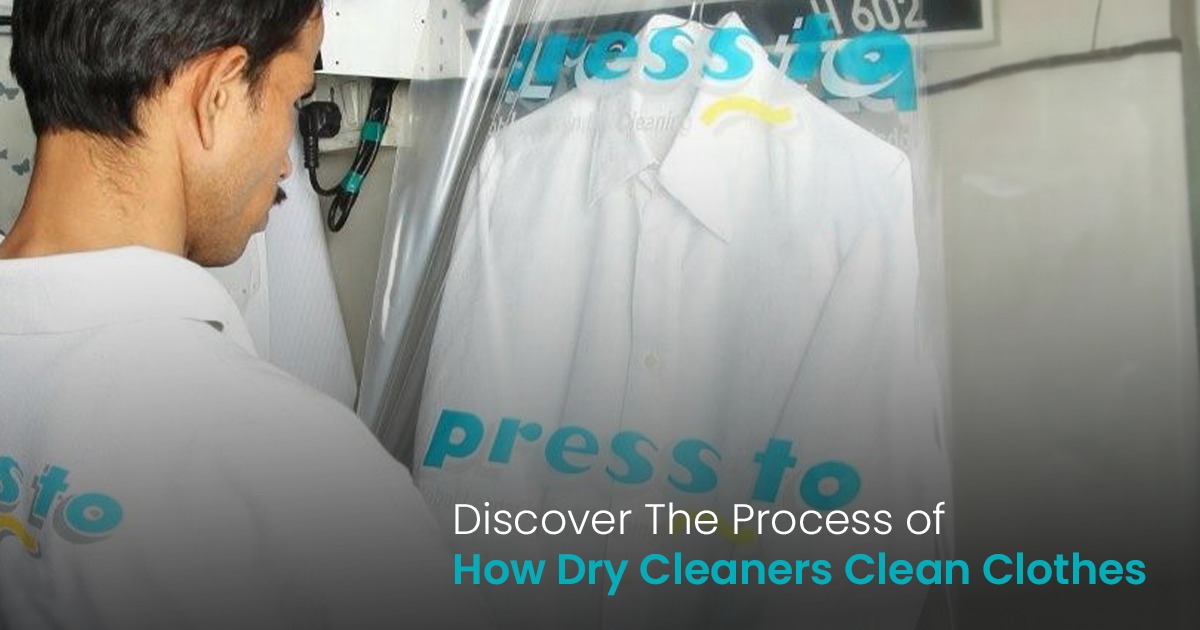
June 11, 2024
Discover The Process of How Dry Cleaners Clean Clothes
Dry cleaners clean garments using a specialized process that involves the use of solvent-based cleaning agents rather than water. This process is designed to effectively remove dirt, stains, and odors from fabrics while minimizing the risk of damage, shrinkage, or color fading that can occur with traditional washing methods. Here's how dry cleaners typically clean garments:
-
Inspection and Pre-Treatment
When you bring your garments to a dry cleaner, they are inspected for stains, tears, missing buttons, and other issues. Stains are pre-treated using specific spotting agents tailored to the type of stain (oil-based, protein-based, etc.). This helps to loosen and break down the stains before the cleaning process begins. -
Loading the Machine
The pre-treated garments are placed inside a large, specialized dry-cleaning machine. This machine resembles a large drum similar to a washing machine, but it operates differently. The machine is designed to hold garments gently without causing damage. -
Cleaning Solvent Application
A dry cleaning solvent, often perchloroethylene (perc), is added to the machine. The solvent is a chemical solution that can dissolve oils, greases, and other contaminants from fabrics without the need for water. The machine's drum rotates, allowing the solvent to penetrate the garments. -
Agitation and Cleaning
As the drum rotates, the garments gently tumble in the solvent. This motion helps to agitate the solvent and dislodge dirt and stains from the fabric fibers. The solvent dissolves the dirt and oils, suspending them in the liquid. -
Filtration and Purification
After the cleaning cycle, the solvent is drained from the machine and passed through a filtration system. This process removes dirt, particles, and contaminants from the solvent, ensuring its effectiveness for future cleaning cycles. -
Drying
Once the solvent is filtered, the machine enters a drying phase. The machine's drum rotates at a high speed to extract the majority of the solvent from the garments. Some machines also use warm air to aid in the drying process. The remaining solvent that may be trapped within the fabric evaporates quickly due to the low pressure and temperature. -
Finishing and Pressing
After drying, the garments are carefully inspected for any remaining stains. If needed, additional spot treatments are applied. Garments are then professionally pressed and finished using specialized equipment to restore their original shape and appearance. Steam and precise pressing techniques are used to achieve this. -
Quality Control and Packaging
Once the garments are cleaned and pressed, they undergo a final quality check to ensure they meet the desired standards. If approved, the garments are packaged, either on hangers or in protective bags, to prevent wrinkles and dirt during transportation.
It's important to note that the dry-cleaning process requires specialized equipment, expertise, and attention to detail. Different fabrics and stains might require adjustments in the cleaning process to ensure optimal results. As the dry-cleaning industry evolves, there is a growing emphasis on using eco-friendly solvents and practices to minimize environmental impact.